LEADING
SURGERY CENTERS TO WATCH IN 2025


Transforming Surgical Training and Patient Outcomes with Robotics




DR. BU ABDULLAH CHAIRMAN
BU ABDULLAH GROUP














































24TH JAN. 2026
SATURDAY
CROWNE PLAZA DUBAIDEIRA BY IHG












LEADING
SURGERY CENTERS TO WATCH IN 2025


Transforming Surgical Training and Patient Outcomes with Robotics




DR. BU ABDULLAH CHAIRMAN
BU ABDULLAH GROUP














































24TH JAN. 2026
SATURDAY
CROWNE PLAZA DUBAIDEIRA BY IHG












Pearl Shaw
Pearl Shaw
Themedicalworldhasembracedroboticsurgeryfasterthanmost expected.Hospitalsworldwidenowdependonthistechnologyfor routineandcomplexcasesalike.Bettersurgicaloutcomesandreduced recoveryperiodshavemadeitapreferredchoiceformanyprocedures.
Thestatisticsareimpressive.Everyyear,millionsofpeoplebenefitfrom roboticproceduresacrossspecialtieslikecardiology,orthopedics,and urology.Hospitalstaysareshorter,complicationsdecrease,andpeople getbacktotheirdailyroutinesquicker Thistechnologyshines particularlyinsurgeriesrequiringmeticulousprecisionandminimal invasion.
However,buyingexpensiveroboticsystemsdoesnotautomaticallymake ahospitalgreatatusingthem.Trueexcellencecomesfromskilled surgeonswhohavemasteredthetechnology,teamsthattrainconstantly, andinstitutionsgenuinelycommittedtopushingboundaries.Some centershavebuilttheirentiresurgicalprogramsaroundthisphilosophy, creatingenvironmentswhereinnovationthrives.
Throughthisedition,InsightsCareaimstohighlightexactlythesekinds ofplaces.LeadingRoboticSurgeryCenterstoWatchin2025 showcasesinstitutionsdoingexceptionalworkrightnow Welookedfor centerswithproventrackrecords,notjustfancyequipment.These hospitalsdemonstrateconsistentlyexcellentpatientoutcomesand contributerealadvancestothefield.
Readingthroughthisedition,youwillunderstandwhatseparatesgood roboticsurgeryprogramsfromtrulyoutstandingones.Youwillseethe differentapproachesthesecenterstake,learnabouttheirsuccesses,and getasenseofwheresurgicalcareisheaded.
Hope you have an informative read ahead!
The Front Page Exclusive Industry Insights
06 Santa Clara Valley Healthcare Transforming Surgical Training and Patient Outcomes with Robotics
18 The University of Kansas Health System Setting the Standard in Robotic Innovation The Story Within
26 Future of Medicine Why Advanced Robotic Surgery Facilities Are the Next Frontier in Healthcare
16 Surgical Innovation Exploring the Technology Behind Robotic Surgery Centers




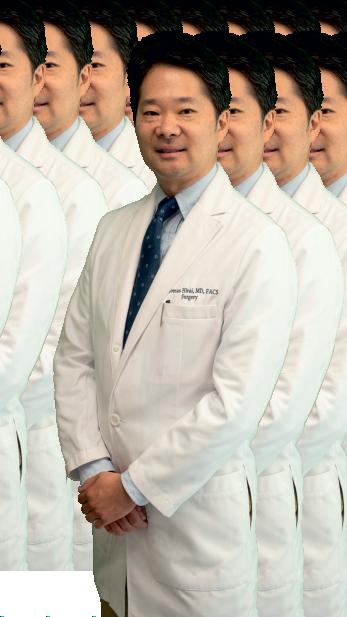



Brief Featuring Person Organiza�on
Broward Health browardhealth.org
Shane Strum President and CEO
Cook County Health wphospital.org
Erik Mikai�s Chief Execu�ve Officer
Dr. Joanna Staunton Medical Director
Santa Clara Valley Healthcare scvh.org
The University of Kansas Health System kumc.edu
Dr. Catherine R. Harris Director of Robo�c Surgery & Co-Chief of Urologic Surgery
Dr. Thomas Hirai Director of Robo�c Surgery & Bariatric Surgery
Dr. Moben Mirza Urologic Oncologist and Chair of Urology
White Plains Hospital wphospital.org
Susan Fox President and CEO
Broward Health is a comprehensive public healthcare system leading excep�onal, compassionate, and high-quality medical care to the South Florida community, focusing on pa�entcentered services and advanced treatments.
Cook County Health provides quality medical, emergency, specialty, and public health services for Chicago and suburban Cook County residents, regardless of ability to pay.
Santa Clara Valley Medical Center offers extensive public healthcare including trauma, burn, neonatal intensive care, emergency, stroke, psychiatric, and specialized outpa�ent services across Santa Clara County.
University of Kansas Health System delivers advanced pa�ent care, medical research, and health educa�on, offering specialized treatment for complex condi�ons across mul�ple loca�ons.
White Plains Hospital is a not-for-profit Westchester healthcare provider delivering advanced acute, preven�ve, and specialty medical care through hospital and outpa�ent centers.
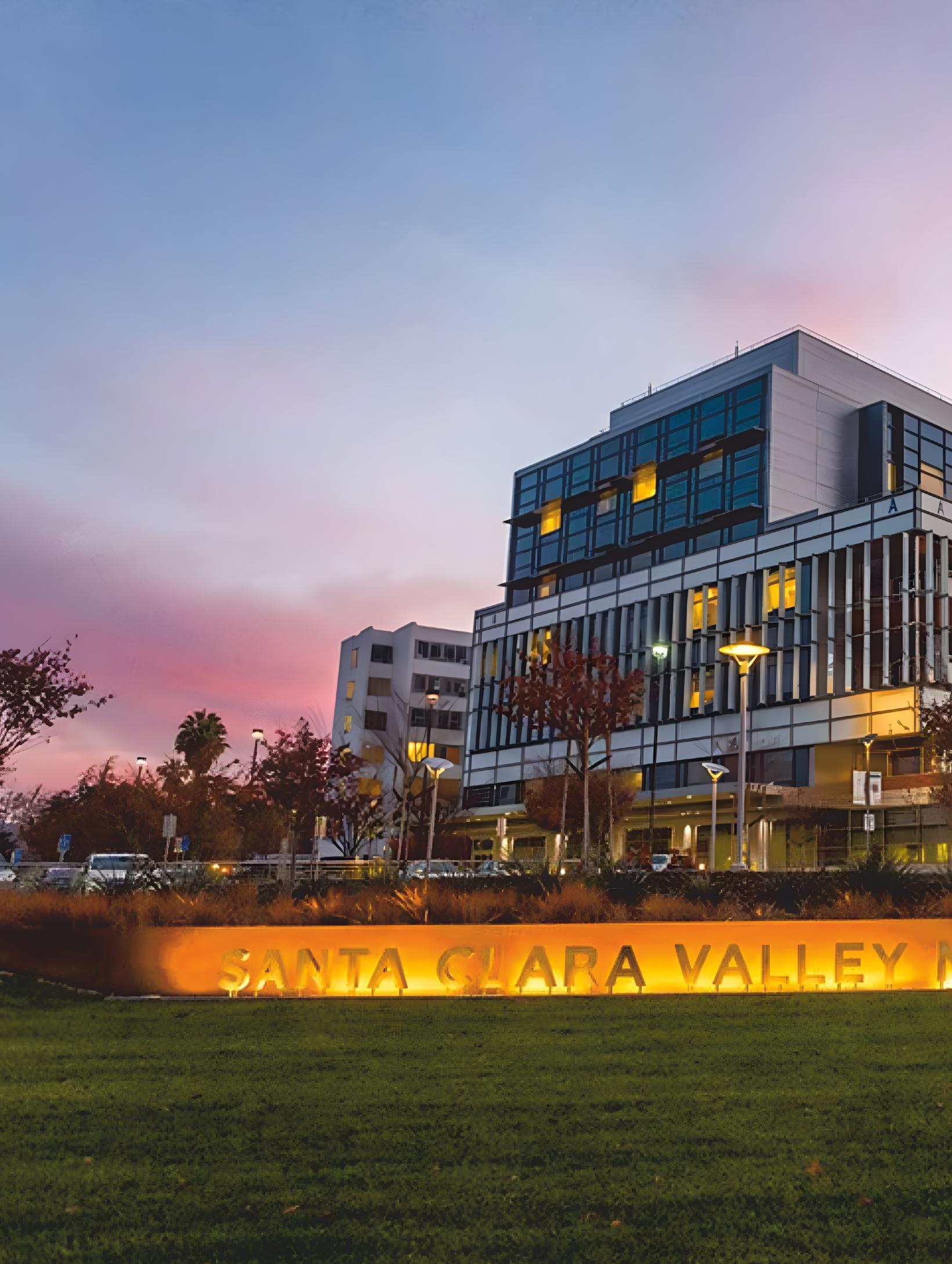

Transforming Surgical Training and Patient Outcomes with Robotics
We are no longer asking if robotic surgery will change healthcare—it already has.Thequestion now is how far technology will go.As hospitals worldwide invest in advanced surgical platforms, the shift toward minimally invasive procedures is accelerating. The robotic surgery market is accelerating toward a $15 billion benchmark by 2025 Behind the numbers is a pivotal transformationinhowsurgeonsoperate,mentor,anddeliver careinahigh-techera.
InSiliconValley, has SantaClaraValleyHealthcare(SCVH) embraced this critical technological innovation. SCVH is California's second-largest County-owned health and hospitalsystem,comprisedoffouracutecarehospitalsanda broadnetworkofprimaryandspecialtyclinics,servingoneof themostdiverseandpopulatedmulti-culturalcountiesinthe nation.AsanintegralpartoftheCountyofSantaClaraHealth System, SCVH integrates robotic surgery into its mission of high quality, accessible care at two flagship facilitiesO’Connor Hospital (OCH) and Santa Clara Valley Medical Center(SCVMC).SCVH’sapproachisfocusedonimproving patient outcomes while providing surgical to the next generationofsurgeonsintheevolvingfieldofroboticsurgery
Centraltotheseeffortsarethreemedicalleaders:Dr.Thomas Hirai, MD, FACS, Director of Robotic Surgery and Bariatric Surgery, O’Connor Hospital; Dr. Catherine R. Harris, MD, MPH, FACS, Surgeon, Urology Division, Santa Clara Valley Medical Center; and Dr. Joanna Staunton, MD, Medical Director, Perioperative Services, Santa ClaraValley Medical Center.Their collaboration is advancing robotic surgery across multiple specialties, positioningSCVHasaprogramtowatchin2025.
Let’s explore how SCVH has adopted robotic surgery to enhancepatientcareandadvancesurgicaltraining!
The rapid ascension of SCVH’s robotic surgery program is rootedinthededicationandvisionofitsmedicalleadersand surgeons.ForDr.Harris,theevolutionofroboticsurgeryhas beenintegraltohercareer “Urologistswereearlyadoptersof robotic surgery, and I was fortunate to train during a time of tremendousgrowthinroboticsurgery Itwasalsoduringthis timethattheclinicalbenefitsofroboticsurgerybecameclear

“We are honored to be the first SRC Center of Excellence in Robotic Surgery in Silicon Valley. We are in the process of renewing our COE designation in 2025.”
— Dr. Thomas Hirai
Mydesiretobuildaroboticsurgeryprogramwasbasedonmy conviction that our patients deserve access to surgical technologythatoptimizesoutcomes.”
Dr. Joanna Staunton’s pathway into robotics was serendipitousyetpurposeful.In2018,shewasapproachedby Dr. Harris and the SCVMC Chief of Urology at the time regarding the need to secure a robotic system for SCVMC.
“Cancer care in Urology had become primarily robot based. Fromthere,IlearnedeverythingIcouldaboutroboticsurgery and met with my leaders to help make the robot a reality at SCVMC.”
For Dr. Hirai, the transition from traditional open surgery to robotic techniques was deeply personal and pragmatic.
“Duringmytrainingtobecomeasurgeon,Ilearnedthatopen surgery, despite being lifesaving, can have significant downstream effects on patients: more pain, longer recovery, intestinaladhesionssometimesleadingtobowelobstruction, incisional hernias Subsequent surgeries could be challenging, with higher risks of injury and complications. Seeing all that, I became increasingly motivated to offer patients surgery through minimally invasive access.” His pursuitofexcellenceledhimacrosscontinents,stating,“Not only did I pursue fellowship training in Minimally Invasive Surgery, but I was also blessed with the opportunity to learn fromexpertsintheUS,EuropeandJapan.Thisledmetohone myskillsinRoboticSurgery.”
Thomas Hirai, MD,
FACS Director of Robotic Surgery and Bariatric Surgery O’Connor Hospital


“My desire to build a robotic surgery program was based on my conviction that our patients deserve access to surgical technology that optimizes outcomes.”
— Dr. Catherine R. Harris
The success of SCVH’s robotic surgery programs is not merely about technology but about aligning innovation with themissionoftheCountyofSantaClara,toplanfortheneeds of a dynamic community, provide quality services, and promoteahealthy,safeandprosperouscommunityforall,as well as SCVH’s own mission. Dr Harris emphasizes this connection,stating,“Roboticsurgeryalignswiththemission of Santa Clara Valley Healthcare to provide high quality, accessiblehealthcare,andcommitmenttoexcellence.”
At O’Connor Hospital, Dr. Hirai and his team have deliberatelybuilttheirroboticsprogramaroundthismission, fosteringbothclinicalandoperationalexcellence.“Ibelieve each hospital of Santa ClaraValley Healthcare is an integral partofthesystem.AndatO’ConnorHospital,wehavepushed ourselvestobecomeanimportanthubforelectivesurgery As such,wehavestrivedforcontinuousefficiencyimprovement. Bybeingabletodomoreroboticsurgeriessafelyeachday,we can offer minimally invasive elective surgery to more and morepatients,increasingaccesstocaretoourpopulation.”
Catherine R. Harris, MD, MPH, FACS Director of Robotic Surgery, Co-Chief of Urologic Surgery Santa Clara Valley Medical Center

SCVH’sdistinctionasaleaderinroboticsurgerystemsfrom itsdualfocusonclinicalexcellenceandeducation.O’Connor HospitalmadehistoryinDecember2022whenitbecamethe firstfacilityinSiliconValleytoachievetheSurgicalReview Corporation(SRC)accreditationasaCenterofExcellencein Robotic Surgery (COERS) Dr Hirai, recognized as a Surgeon of Excellence in Robotic Surgery, views this milestone as both validation and responsibility. “We are honored to be the first SRC Center of Excellencein Robotic SurgeryinSiliconValley Weareintheprocessofrenewing our Center of Excellence designation in 2025. We look at qualitynotjustasaone-timegoal,butasacontinuouspursuit, andithasthusbeenveryexcitingtogothroughthiswithour team.WecanalsoproudlysayourRoboticsprogramisatthe toptierinqualitycomparedtoanyprogramintheBayArea.”
Meanwhile,atSCVMC,Dr.Harrisplaysapivotalroleinthe residencyprogram,ensuringthatfuturesurgeonsgaincritical hands-on experience with robotic systems. “SCVH is a
prominent teaching hospital and surgical training site. It is importantfortraineestohaveexposuretoroboticsurgeryas partoftheircomprehensivetraining.”
Launching a robotic surgery program in a public healthcare systemisnosmallfeat.Dr Harrisrecallsthecriticalstepsin this journey: “The key steps in starting the robotic surgery programatSCVMC were obtainingadministrativeapproval and funding, and surgeon buy-in. Hospital and County leadership and surgeons were extremely supportive once presented with the clinical benefits of robotic surgery Surgeons who were not robotically trained were quick to adoptthenewtechnologytoenhancetheirtechnicalskillset forthebenefitoftheirpatients.”
Dr. Staunton’s role as SCVMC Medical Director of Perioperative Services involves ensuring smooth operations across multiple specialties. “We were able to hire a Robotic NurseCoordinatoratSCVMCwhenwepurchasedtherobot.
This has helped keep turnover times comparable to nonrobotic cases and this nurse also coordinates all the supplies forthedifferentroboticspecialties.”
Eachleadercanpointtopivotalmomentsthatmarkedashift in SCVH’s robotic surgery trajectory. For Dr. Harris, performing the very first robotic case was especially memorable.“Theveryfirstcasewasanobvioushighpointfor me. I remember the excitement and energy in the operating roomthatday,asitwasaculminationofthesignificanttime and energy invested by the entire operating room staff. I am proud and continually grateful to work in a hospital that values technological innovation and prioritizes patient outcomes.”
Dr.Stauntonhighlightsaculturalshiftamongseniorsurgeons asamilestone.“Watchingourmoreseniorsurgeonswhodid not have robotics in their residencies choosing to do robotic casesoveropenorlaparoscopiccases.Therehadbeensome anxiety about learning a new modality However, our surgeonstooktothechallengeandexcelled.Iamsoproudof them!”
Surpassing 1,000 robotic surgeries at OCH was a landmark eventforDr.Hirai.Hereflectsonthecelebration:“Wewere delighted when we collectively surpassed 1,000 robotic surgeries at O’Connor Hospital. It was an exciting moment forourProgramandagreatlandmark.Weheldacelebratory eventwithourentireteamandhospitalstaff,anditwasvery energizing to feel the strong support from everyone, from hospitalstaffallthewayuptoourSCVHCEOandourCounty Supervisor.”
For SCVH, expanding robotic services is about more than volume;it’saboutensuringequitableaccesstoadvancedcare. As Dr Harris notes, “Robotic surgery employs state-of-theart technology, but it is also standard of care for many surgeries.”
Dr Hirai elaborates on how efficiency and innovation can directly expand access. “As the program has done more, we have collectively become more efficient, streamlining the instrument use, saving time and opening the access to more and more patients. Cost saving has been tremendous, due primarilytodecreasedhospitallengthofstayandnothaving

“Watching our more senior surgeons who did not have robotics in their residencies choosing to do robotic cases over open or laparoscopic cases was a proud moment.”
— Dr. Joanna Staunton
toreferpatientsoutsidethesystem.Andasmorepatientsget treated with minimally invasive surgery, we can potentially shortentheirtimetoreturntofullfunction.”
Whenaskedwhatadvicetheywouldoffertootherinstitutions looking to develop similar programs, the SCVH team emphasizes collaboration, data, and a commitment to excellence.Dr Harrisadvises,“Identifythekeystakeholders and leverage the data. Be steadfast in your commitment to providebestpatientcare.”
Dr.Stauntonadds,“Anytimeyouareinaleadershipposition, youneedasmuchconsensusasyoucangettoaffectchange. This means constantly working on your relationships with other leaders. Once you get that, the rest is relatively easy Specifictotherobot:itisexpensive,sofocuswhereitiscost effective.”
For Dr. Hirai, the philosophy is about balancing quality, innovation,andsafety.“IbelievebeingaCenterofExcellence involves the ability to reconcile many aspects of excellent patient care simultaneously: achieving excellent outcomes andtrackingthem,embracingtechnologiesthatcanimprove humanlife,strivingforefficiencyandcost-effectivecare,and atthesametimenevercompromisingonsafety.”
Joanna Staunton, MD
Medical Director, Perioperative Services Santa Clara Valley Medical Center


Looking toward the future, the leaders at SCVH are enthusiastic about emerging trends in robotic surgery Dr Harris is particularly focused on expanding the scope and accessibility of robotic platforms. “We are very fortunate to be in a time of tremendous technological innovation in healthcare. For robotic surgery, I am excited to see improvementsthatincreaseitsscopetobenefitmoresurgeries and patients, and I hope to see increased affordability of robotic surgery platforms as that is the major barrier in resourcelimitedsettings.”
Dr Staunton anticipates market shifts that could broaden adoption. “2026 will likely bring competition to the robotic market.Thismeansmorechoicesandpotentiallylowerprices which will enable us to expand our service offerings. As always,decidingwhattodowillbeateameffort.”
Dr Hirai is particularly excited about technological enhancementsthatintegrateAIandaugmentedimaginginto surgical practice. “The field continues to advance without signs of slowing down There has been progressive improvementinimageresolution,andtheadditionoffeatures such as tactile feedback. Fluorescence guided surgery has become routine, and new technologies are being developed. AI has the potential to contribute to making surgery safer in thefutureandissomethingtowatchfor.”
With over 2,000 robotic cases performed at SCVMC and OCHcombined,SCVHhasestablisheditselfasaleaderinthe field.Fifteenroboticallytrainedsurgeonsnowservepatients across specialties including cardiothoracic, colorectal, general surgery, gynecology, gynecology-oncology, and urology. In 2024 alone, SCVMC reported a 33% increase in robotic case volume, driven by enhanced efficiency and growingsurgeonadoption.
The cost savings are equally impressive, primarily due to shorterhospitalstaysandreducedneedforoutsidereferrals. Furthermore, robotic surgery has contributed to improved cancer care metrics, reinforcing SCVH’s commitment to quality.Yet,withdemandsurging,thehealthcaresystemfaces a new challenge: the need for additional robotic systems to meetpatientneedsin2025andbeyond.
As Santa Clara Valley Healthcare looks to the future, its leaders remain committed to advancing robotic surgery, expandingtraining,andmakingcutting-edgecareaccessible to all. In the words of Dr Hirai, “As healthcare becomes increasingly complex, it will be essential to build strong teams,tobeopentolistenandkeeptheteamengaged.”




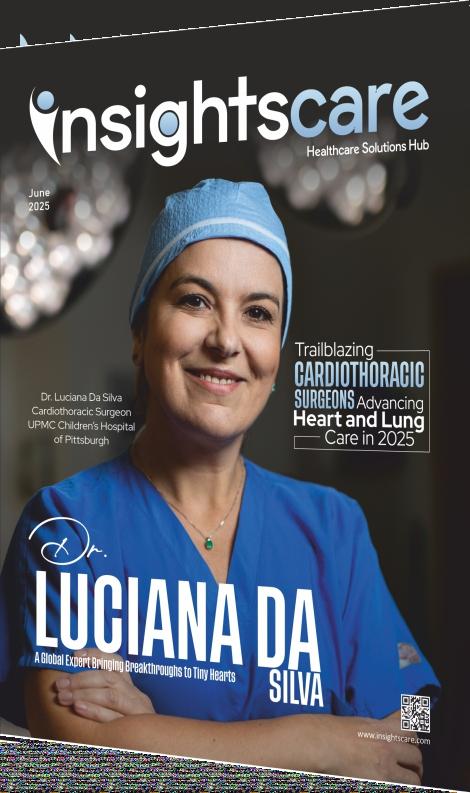



www.insightscaremagazine.com

Advancedroboticsurgeryfacilitiesrepresenta
transformativeleapformodernmedicine,marking thenextfrontierinhealthcareadvancement.From ultra-preciseinstrumentstoadvanceddigitalsystems,a quietrevolutionistakingplaceinoperatingrooms.
This article explains how advanced robotic surgery facilities are changing healthcare by making surgeries safer, faster, and more precise through new technology and innovation.
Robotic-assistedsurgery,onceconsideredexperimental,has becomeatrustedpartofmodernmedicalpractice.Surgeons infieldssuchasurology,gynecology,orthopedics,and gastrointestinalsurgerynowrelyonroboticsystemsto performcomplex,minimallyinvasiveoperationswith outstandingprecision.Thesetoolsallowsmallerincisions, fewercomplications,andbetteroutcomesforpatients.
Itisestimatedthattheyear2025willbethebiggestyearof roboticproceduressincehospitalsarestillheavilyinvesting inthistechnology.Roboticsystemsenhanceaccuracy,
speedrecovery,andmaketheoperationinthehospitalmore efficient.Theeraofroboticsinsurgeryhasarrivedinfull.
TechnologyTransformingSurgery
• MiniaturizationandMicro-Robotics:
Smallermodularrobotshavebeendevelopedby engineersandcanbeeasilyfittedintotheoperating roomsofnormalsize.Theseminiaturesystemsachieve tremendouscontrolinthedelicateprocedureslike thoseofprostate,colonandlaparoscopicsurgeries. Theirmicroscopictoolsminimizetraumatic experiencesofthetissues,scarring,andensurepatients healquickly
• Data-EnhancedSurgicalPrecision:
Thepresent-dayroboticsystemsgeneratethreedimensionalviewsoftheanatomyofapatientinhigh resolutionandwithdigitalimages.Thesevisualmaps allowsurgeonstodirectinstrumentsaspreciselyas millimeterstoperformcleanerandsaferprocedures. Surgicalprocedurescanbepredictedbetter,andthe
possibilityoferrorsisminimizedthroughthe possibilitytoobservethestructuresinreal-timeand monitorthem.
• TelemedicineandRemoteSurgery:
Remotesurgicalsystemsnowallowexpertsurgeonsto guideorevenperformoperationsfromdifferent locations.Withsecure,high-speednetworks,hospitals canconnectspecialiststoruralorunderservedregions, givingpatientsaccesstoworld-classcarenomatter wheretheylive.
Roboticsurgeryhasevidentmedicalandeconomicbenefits tothepatientandhospital.
• GreaterPrecisionandSafety:
Roboticarmsmovewithawiderrangeandfiner accuracythanthehumanhand.Thisprecisionhelps avoidaccidentaltissuedamage,lowersinfectionrisks, andimprovesoverallsurgicalquality.Studiesshowa 25-40percentboostinprecisioncomparedto traditionalmethods.
• FasterRecoveryandShorterHospitalStays:
Becauseroboticproceduresarelessinvasive,patients experiencelesspain,reducedbloodloss,andsmaller scars.Mostrecovermorequicklyandleavethehospital uptofourdayssooner,whichhelpshospitalstreat morepatientsandlowercosts.
• BetterEfficiencyandCostSavings:
Hospitalsperformingmanyroboticproceduresreport uptoa20percentdropinoperatingcosts.These savingsareachievedthroughfewercomplications, betterscheduling,andbetteruseofresources.Patient turnoverisalsoenhancedbystreamlinedworkflowand acceleratedrecoverytime.
Training,Ethics,andWorkforceDevelopment
Theriseofroboticsisalsoreshapinghowsurgeonstrain andwork.Medicalinstitutionsnowusehigh-fidelity simulators,virtualtrainingsystems,anddigitalperformance toolstohelpdoctorsmasternewtechniques.Thesesystems
letsurgeonspracticecomplexproceduressafelyandgain confidencebeforeenteringtheoperatingroom.
Roboticsalsoeasesthephysicaldemandsofsurgery
Reducingfatigueandrepetitivestrain,ithelpssurgeons maintainfocusandprecisionduringlongoperations.This improvementsupportsbetterperformanceandreduces workforceburnout.
Atthesametime,hospitalsandregulatorsareworkingto addressethicalandlegalquestions.Theyaredeveloping clearrulesforaccountability,equipmentmanagement,and patientconsenttoensuresafetyandtransparencyas technologybecomesmoreinvolvedinthesurgicalprocess.
Whileroboticsurgerycontinuestogrow,challengesremain. Highpurchaseandmaintenancecosts,limitedinsurance coverage,anduneventrainingprogramsstilllimitaccess. However,newpartnershipsbetweenhospitals, manufacturers,anduniversitiesaresolvingtheseissues throughshared-usemodels,affordablesystemdesigns,and standardizededucation.
Withsuchbarriersbeinglowered,theadvancedrobotic surgeryfacilitieswillbecomethenewfrontierofsurgery Theirsmoothsystems,theiraccuratetools,andtheir internationalscopewilltransformthewayhospitals operate,thewaypatientsrecoverandthewayphysicians treatthem.
Theevolutionofsurgeryisenteringitsmostexcitingphase. Roboticsdoesnotreplacethesurgeon;itenhancesthemto achievenewstandardsofaccuracy,security,andempathy Throughhuman-technologicalinnovation,theadvanced roboticsurgeryfacilitiesaredesigninganewparadigmof carefoundedonexpertise,rapidity,anddependability.
Withinnovation,surgerywillbelessinvasive,recoverywill befasterandqualitycarewillbeaccessibletomorepeople acrosstheworld.Theoperatingroomofthefutureis alreadyhere,guidedbyhumanhands,enhancedby technology,anddefinedbyonesharedgoal:better outcomesforeverypatient.
-Natalie May


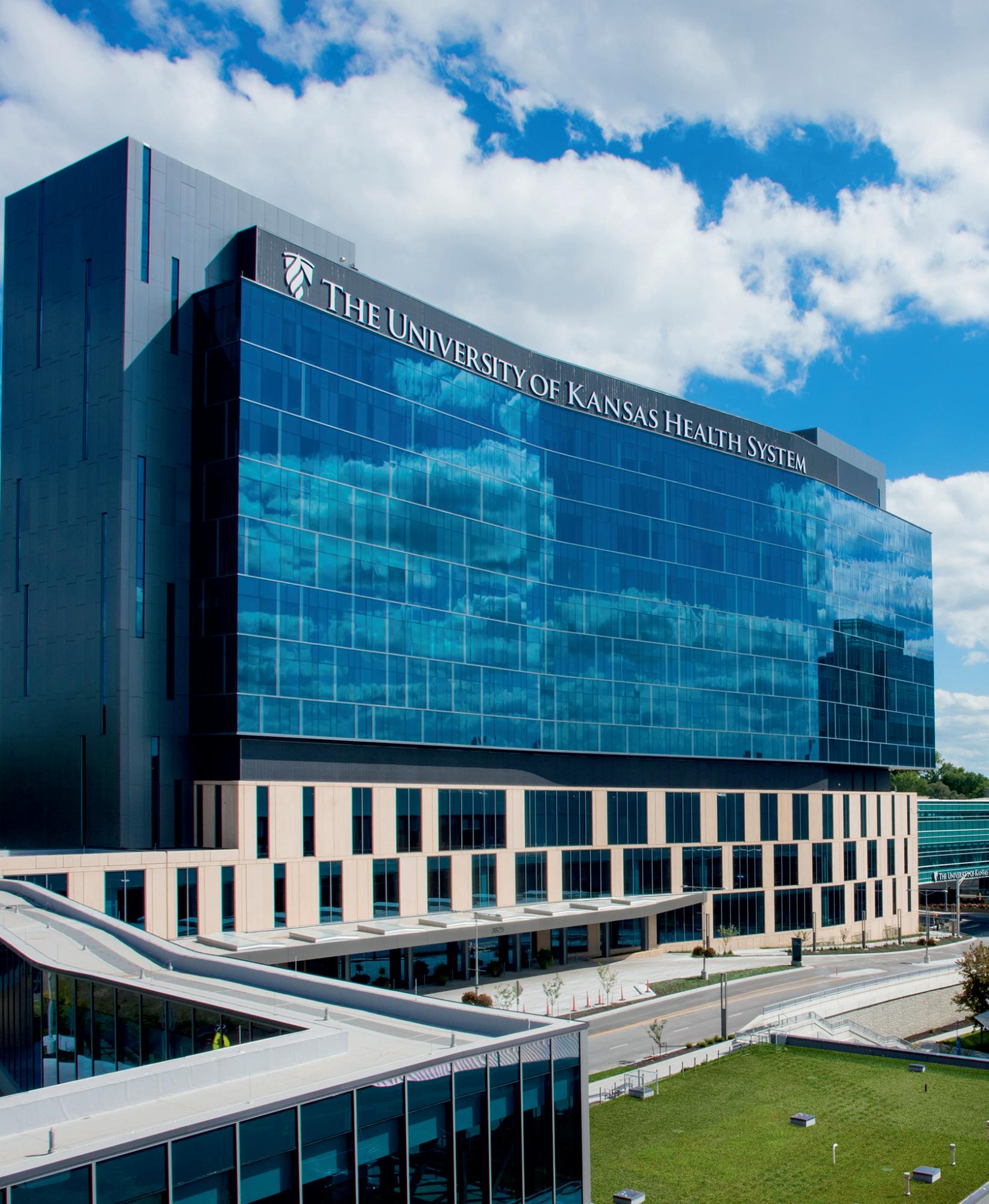
Notsolongago,roboticsurgerywasconsideredabold
experiment, futuristic, intriguing, but far from routine. Fast forward twenty years, and at The UniversityofKansasHealthSystemitisnowpartofeveryday practice, trusted by patients and deeply integrated into surgicalcare.Whatstartedasamodestprogramhassteadily grown into one of the region’s most comprehensive and forward-thinkinginitiatives.
Driving much of this evolution is Dr. Moben Mirza, Urologic Oncologist and Chair of Urology at The UniversityofKansasHealthSystem Alsoaprofessoratthe University of Kansas Medical Center, Dr Mirza has helped bridgeinnovationineducationandresearchwiththerealities ofpatientcare.Underhisleadershipasdirectoroftherobotic surgery program, robotics has advanced from a promising technology to a defining part of the institution’s surgical identity.
Itisnotthemachinesthatdefinetheprogram,buttheexperts behind them: fellowship-trained surgeons, nurses, and staff who never stop learning The newest generation of technology, such as the da Vinci 5 system, enhances this growth with iterative learning powered by machine learning andartificialintelligence.Byprovidingreal-timefeedbackon key performance metrics, it helps surgeons continuously refinetheirskillsandultimatelyimprovepatientoutcomes.
More than anything, the program runs on teamwork and a commitmenttodobettereveryday Forpatients,thatleadsto saferoperations,quickerrecovery,andrealpeaceofmind.
Let’sdelveintotheinterviewdetails!

Can you briefly introduce your robotic surgery center, including its history, core mission, and areas of specialization?
TheUniversityofKansasHealthSystemhasbeenapioneerin roboticsurgerysince2005.Aprogramthatbeganwithasingle robotandtwosurgeonsisnowusedacrossourhealthsystem’s surgical specialties and locations. The program began with the installation of the first soft tissue multiport robot, the DaVinciSSystem,onMarch14,2005.Initially,theprogram startedwithtworoboticsurgeons,butby2025,ithasgrownto include46.Theprogramalsonowhas5Xirobots,1SProbot, and 1 new DV5 robot. The program's early focus was on urology procedures, but it quickly expanded to include gynecology,cardiac,thoracic,surgicaloncology,earnoseand throat (ENT) and general surgery Over the years, the health system has performed over 15,500 robotic surgeries, demonstrating its commitment to advancing minimally invasivesurgicaltechniques.
Ourcoremissionistodeliverthebestpatientcareleveraging the technology at our disposal. Our surgeons are not just employinganothertool,theyareexpertsintheirfieldandin roboticsurgery.Ourapproachisprogrammaticandreflected inallthemembersofourwelltrainedandexperiencedstaff.
What inspired your center to invest in and advance robotic-assisted surgery, and how has that journey evolvedovertheyears?
We saw robotic surgery as a natural evolution in our commitment to innovation and patient-centered care Initially,itwasaboutofferingminimallyinvasiveoptionsfor procedures. Over time, it has become a cornerstone of our surgicalprogram–drivenbyevidencebaseapproaches,

Dr. Moben Mirza Urologic Oncologist and Chair of Urology


“Start with a clear vision and strong clinical champions. Robotic surgery isn’t just about the technology – it’s about building a team and a culture that embraces innovation.”

strong outcomes, surgeon expertise, programmatic growth, and patient demand. What started as a desire for more minimally invasive options has grown into a multidisciplinaryinitiativewithmeasurableimpact.
Whatinspiresusisourpatient’strustandourdrivetoachieve thebestresultsforourpatients.
What robotic platforms, tools, or technologies do you currentlyuse,andhowdotheyenhancesurgicalprecision, patientsafety,orrecoveryoutcomes?
AtourhospitalinKansasCity,wecurrentlyhave5Xi’s,1SP, and have now recently acquired a new DV5 robot (which is thenextgenerationoftheXi).Withtheacquisitionofthisnew system, we see all the benefits of the Xi but with added features such as ultra-high-definition 3D visualization, enhanced instrument precision, and next-generation haptic feedbackthatallowssurgeonstofeelweightandsensetissue resistanceduringprocedures.Theseinnovationshelpreduce trauma, improve accuracy, and support faster, safer recoveries.
Howdoyouensureyoursurgeonsandmedicalteamsare continuously trained and up to date on the latest robotic techniques?
We’vebuiltastandardofcontinuouslylearning.Oursurgeons are experts who have specialized residency and fellowship trainingintheirfieldsandapplicationofroboticsurgery The surgeons participate in collaborative learning, simulationbased training, and peer to peer mentoring. We also host in house workshops for our residents and collaborate with Intuitivetostayaheadofthecurve.Credentialingisrigorous,
andweregularlyreviewperformancemetricstoensuresafety and excellence. Our perioperative teams, operating room nurses, and surgical technicians have an intense training curriculum,extensiveexperience,regularrefreshers,andare constantly cross-training. Our teams also travel for the most up-to-date hands-on skills and simulation training that they canbringbacktothegroup.
Can you share any notable success stories or data points that reflect how robotic surgery has improved for your patients?
Notable success that we have made is expanding our single port robotic platform. We currently do SPcases in our ENT andurologyservicelines,butwearenowstartingtodocases incolorectalandthoracic.Wearetheonlyhealthsysteminthe greaterKCmetroareathathasaSProbot.
Is yourcenterinvolved in any clinical research, trials, or partnershipsrelatedtoroboticsurgeryadvancements?
We have published data on many aspects of our fields of expertise that include robotic surgery These data include improvedpatientoutcomes,decreasedlengthofhospitalstay,
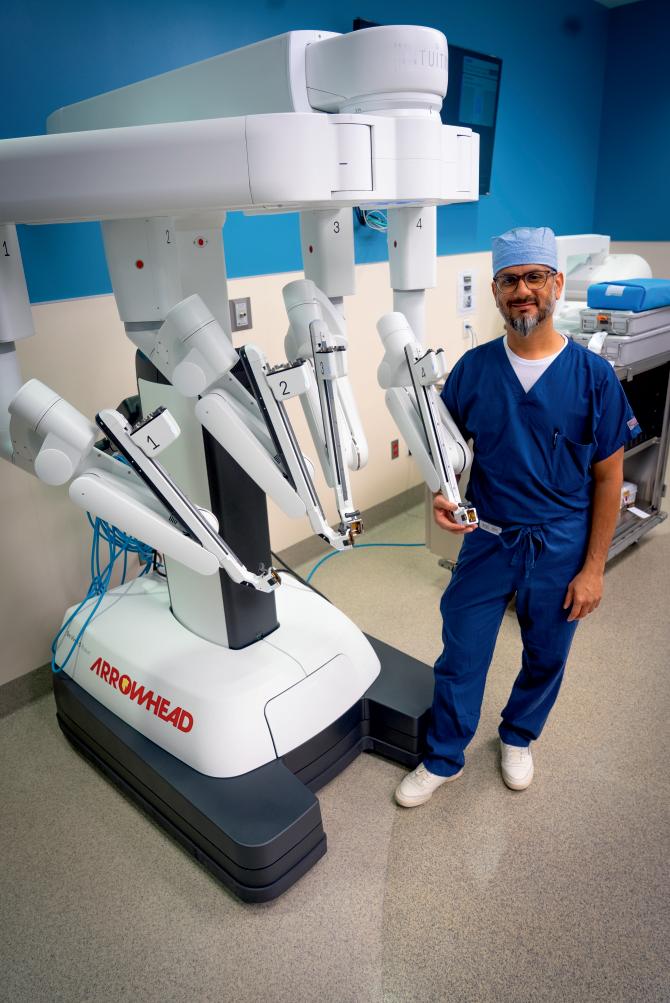

improved quality of life outcomes, reduced blood loss and blood transfusions, faster time to recovery, and successfully pushing the envelope on more complex surgery With the advent of the dv5, we hope to study the impact of haptic feedbackforthesurgeonandhowitcantranslateandimprove patientoutcomes.
Whattrendsoremergingtechnologiesinroboticsurgery areyoumostexcitedaboutforthefuture?
Whenwestartedourroboticsurgeryprogram,wewouldask the question “which surgeries can we do robotically?” With increasedexperienceandimmenseexpertise,wenowdefault to robotic surgery as the best option for our patients in the majority of our work. Technological advancement must be applied with our patients in mind and our prime motive to improve outcomes. Robotic technology has improved with theadventofhapticfeedbackbringinginadimensionwhich is uncharted. Single port robotic surgery is also picking up steam with new applications and evidence showing its advantages in certain surgeries. Remote surgery utilizing robotictechnologyisanotheradvancementwhichisexciting. Other improvements like advanced displays, controls, and improvedergonomicsarealsoverypromising.

What advice would you offer healthcare leaders considering robotic surgery programs, and what should patientsknowwhenchoosingaroboticsurgerycenter?
Start with a clear vision and strong clinical champions. Robotic surgery isn’t just about the technology – it’s about building a team and a culture that embraces innovation. It is veryimportanttohaveastrongpartnershipwiththecompany that develops the technology Intuitive Surgical has been a great partner for us in consistently helping us build and educate our teams, provide resources, and promote our culture.
For patients, it is important to know that you surgeon is an expert in their field, first and foremost. Many centers use robotic platforms for surgery. Our surgeons have obtained advanced training, fellowship specialization, and obtained a rigorous standard to practice in an environment of programmaticexpertise.Theycanleveragethetechnologyto deliver the best outcomes consistently It is important for patients to ask about the surgeon experience, the experience of the institution, and the teams that support the surgeons. There is overwhelming evidence that patient outcomes are better in high volume and specialized center which is all available and more at The University of Kansas Health System.



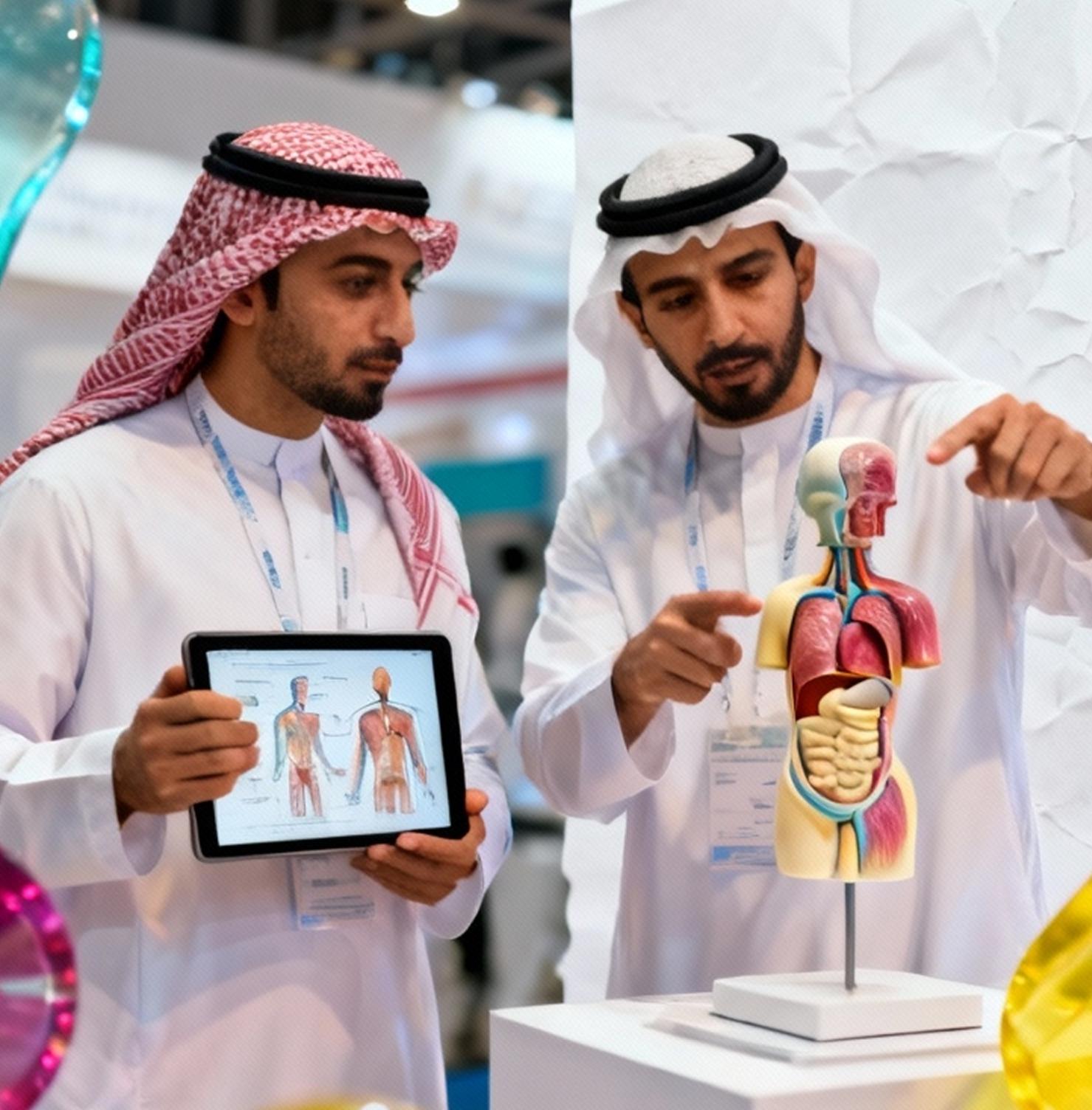

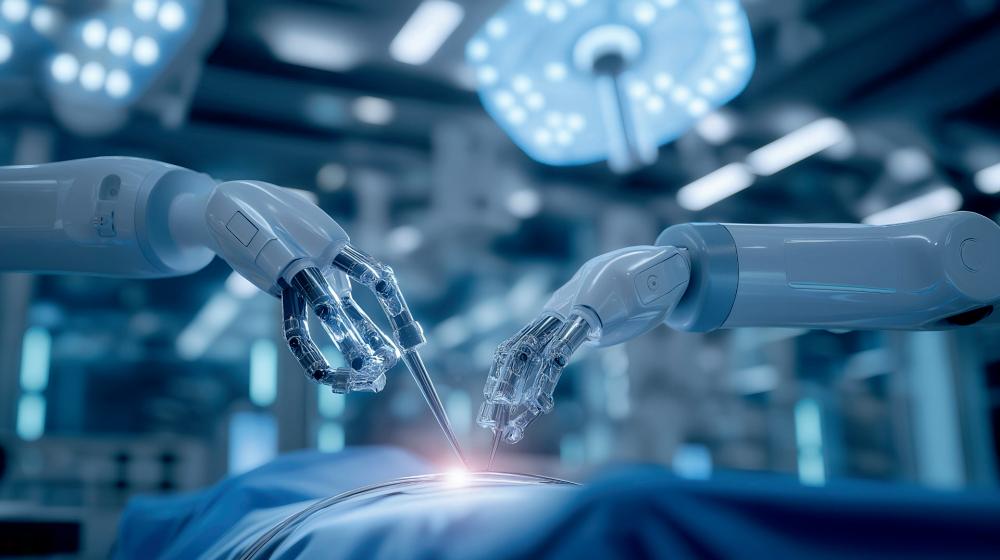
Surgicalinnovationthroughroboticsurgeryisoneof
themosttransformativeadvancesinmodern healthcare.Humanprecisionandmachineaccuracy havemaderoboticsurgerydisruptthecomplexprocedure andprovidemoreaccuracy,safety,andspeedtothesurgeon andthepatientbyinvolvinghumanskillandmachine precision.RoboticSurgeryCentersnowbridgehealthcare andengineering,settinganewstandardforexcellencein modernsurgery
This article looks at the technology behind robotic surgery centers, key innovations in the field, the significant effects it has on patient outcomes and the future of surgery.
Robotic-assistedsurgeryenhancesasurgeon’sabilityrather thanreplacingit.Surgeonsuseroboticarmscontrolled throughaconsoletoperformminimallyinvasive procedureswithexceptionalaccuracy.Asanillustration,in heartsurgery,roboticsystemshaverecentlyenabled surgeonstofixvalvesusingsmallslitsthatpreviouslycould notbeachievedwiththeconventionalopen-heart procedures.
Thisprecisionallowssurgerythroughtinycuts,reducing tissuedamage,bleeding,andrecoverytime.Patients experiencesmallerscars,shorterhospitalstays,andfaster returnstonormallife.Forexample,inheartsurgery,robotic systemsnowletsurgeonsrepairvalvesthroughsmall openingsthatwereonceimpossiblewithtraditionalopenheartmethods.
Originallyusedinfieldssuchasurologyandgynecology, roboticsystemsarenowwidelyappliedinorthopedics, gastrointestinal,andcardiacsurgery.Hospitalsacrossthe worldcontinueadoptingthesesystemstoimprove outcomes.
• MicroRoboticSystems:
Engineershavedevelopedsmall-sizedrobotsthatcanfitin normaloperatingtheaterswithoutspecialarrangements. Roboticsurgeryisnowmorepracticalandcost-effective withthesesmaller,reusableandsterilizablesystems. Researchhasestablishedthatpatientsreceivingthe procedureusingthesesystemsnormallyhealmorequickly
andtakeuptohalfthetimeinhospitalthanthosereceiving standardopensurgery.
• Image-GuidedSurgery:
Modernimagingtoolsnowhelpsurgeonsplanandperform procedureswithgreaterprecision.Detailed3Dimagesfrom pre-surgeryscansmapthesurgicalarea,guidingexact incisionsandimplantplacement.Inorthopedicsurgeries, thesetoolshelppositionimplantsaccurately,loweringthe chanceofmisalignment.
Inorgantransplantsandvascularoperations,surgeonsuse real-time3Doverlaysthatshowinternalstructuresmore clearly,improvingcontrolduringdelicatetasks.Combining roboticprecisionwithenhancedvisualizationhascreateda newlevelofaccuracyandsafetyinsurgery.
• ErgonomicsandEfficiency:
Roboticshasalsotransformedtheworkofsurgeons.The surgeonsareworkingonanergonomicconsole,which meansthattheycanmovetheinstrumentswithease,and thiscanhelpthemminimizefatigue.Thisdesignisusefulin keepingthefocusaswellastheperformanceconstant duringsurgery.
Thesesystemsalsomakeoperatingroomsmoreefficient. Studiesshowroboticsurgerycancutoperatingtimebyup to25%andreducesurgicalcomplicationsbyabout30%. Hospitalsbenefitfromlowercosts,betteroutcomes,andthe abilitytotreatmorepatientswithexistingstaffand facilities.
Roboticsurgeryhasdefinitebenefitstothepatients;quicker recovery,reducedpain,reducedscar,anddiminished chancesofbeinginfected.Hospitalsalsobenefitthrough shorterpatientstays,fewerreadmissions,andimproved resourceuse.Together,theseresultscreateamoreefficient healthcaresystem.
ThistechnologyhasmadeRoboticSurgeryCentersof excellenceandeducation,asitkeepsgrowing.Theyhirethe bestsurgeons,promotecross-disciplinarystudiesand educatethefuturegeneration.
TheDaVincisurgicalsystemhasbeentheworldleaderin roboticsurgery,anditisconstantlybeingadvancedto improvecontrol,comfortandaccessibility.Itsnewest version,daVinci5,improvesmovementprecisionand usabilityforhospitalsofallsizes.Inparallel,innovationis growingworldwide.
Next-generationroboticsystemsarebecomingsmarterand moreadaptive.Researchersarecomingupwithrobotsthat modifythemovementsinrealtimetotheanatomyofa patientandcarryoutsomechosenactionsunderthe supervisionofahuman.Suchdevelopmentswillalso enhancetheaccuracyofthesurgeryandhelpthesurgeons inthecomplicatedoperations.
However,challengesremain.Thesmallhospitalsmayfind itdifficulttoadaptduetohighcosts,constantmaintenance, andspecializedtrainingrequired.Clearguidelinesand oversightarealsorequiredonethicalandsafetyissues. Furthercooperationbetweenthedoctors,engineers,and policymakersisaidingindealingwiththeseissuesand maintainingthesafeandequitableuseofthetechnology.
TheriseofRoboticSurgeryCentersmarksoneofthe greatestmilestonesinmodernmedicine.Thecombination ofroboticaccuracyandhumandexteritygivesthesurgeons theabilitytocompletecomplicatedtasksandachievefaster recoveryrateswithareducednumberofcomplications.
Withthecontinuedreductioninsizeanddiversityinthe systems,aswellasintheireaseofuse,theywillcontinueto moveintonewdisciplinesinsurgery Thefutureofsurgical careliesnotjustinadvancedmachines,butinhowthey empowersurgeonstooperatewithgreaterprecision,care, andconfidencereshapingthefutureofmedicineone movementatatime.
-Natalie May
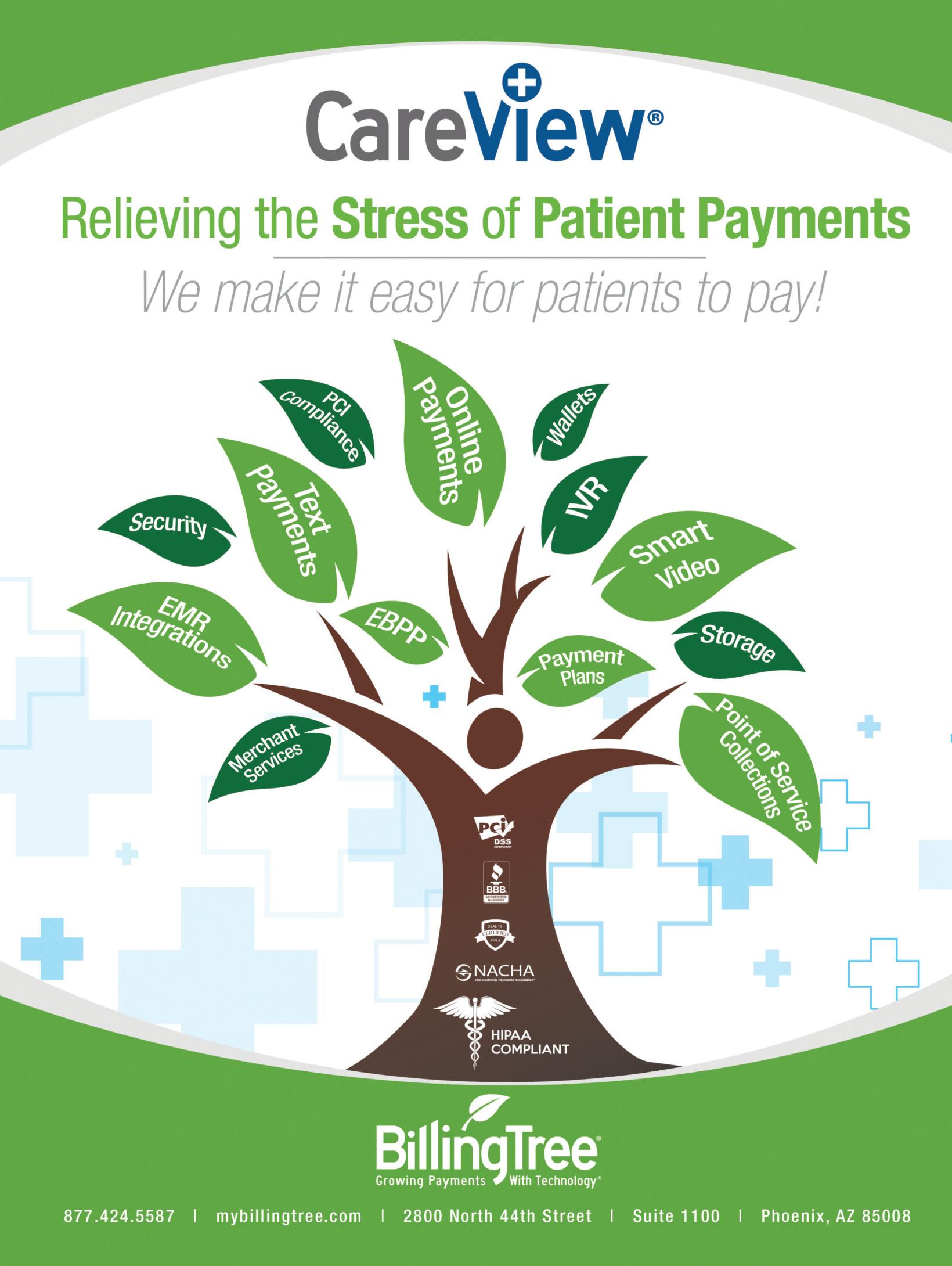



www.insightscaremagazine.com